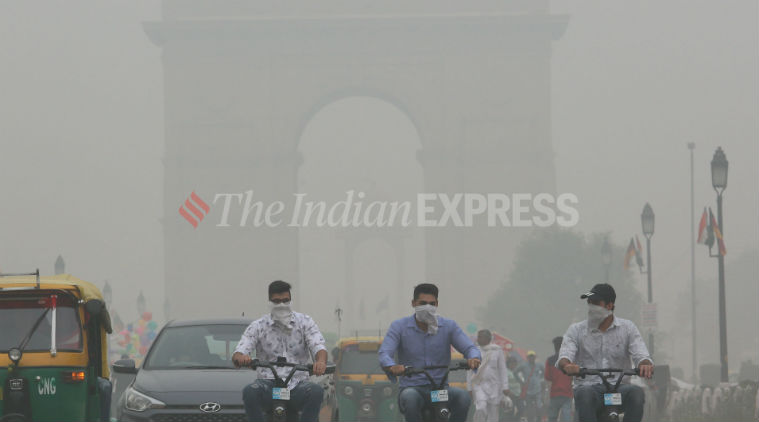- India
- International
Delhi: Pollution may return to ‘severe’ level today
According to the forecast issued by the Centre’s air quality monitoring system, SAFAR, wind, which till last week was blowing from the south/southeast direction, is now blowing from the northwesterly direction.
 SAFAR officials said local surface wind speed needs to rise to help flush out pollutants. (File)
SAFAR officials said local surface wind speed needs to rise to help flush out pollutants. (File)
A combination of factors such as a change in wind direction, lower temperatures and local wind speed are expected to push Delhi’s air quality into the ‘severe’ category Tuesday.
According to the forecast issued by the Centre’s air quality monitoring system, SAFAR, wind, which till last week was blowing from the south/southeast direction, is now blowing from the northwesterly direction. This means that emission because of crop residue burning is being carried to Delhi from over Punjab and Haryana.
This, combined with low wind speed in the city and dipping temperature because of an active Western Disturbance — factors that aid the accumulation of pollutants — has meant that Delhi’s AQI Monday was 360, up from 321 Sunday.
“AQI is likely to deteriorate to ‘severe’ category for the next two days. Improvement towards ‘very poor’ is predicted only by November 14,” SAFAR said. The share of stubble burning in Punjab and Haryana in Delhi’s air is expected to increase to 25% Tuesday from 18% Monday.
Contribution of pollution from farm fires reached its peak this season at 44% on October 31. In a tweet, Chief Minister Arvind Kejriwal said: “We should stop stubble burning. People are suffering immensely. SC has also directed. Pollution has again started increasing in Delhi due to stubble burning after some respite last week.”

SAFAR officials said local surface wind speed needs to rise to help flush out pollutants. SAFAR officials added, “Impact of stubble burning in Delhi has varied because some days there might be high fire counts but the wind direction might not be towards the city.”
Cooler temperatures Tuesday and Wednesday may reduce the atmospheric boundary layer height and lead to accumulation of pollutants closer to the surface. According to experts, factors leading to this build-up are varied, with the impact of meteorology, higher share of combustion pollutants, and external biomass and dust contribution among the primary reasons.
Dr Dipankar Saha, former head of the CPCB’s air lab, said external pollution contributes around 37% to Delhi, but the city’s air quality can only be improved with local efforts. “In urban areas, emission sources are constant because activities are the same throughout the year,” he said.
Besides emissions from vehicles, construction activities, open biomass burning, and dust, there is also an added contribution of winds that carry dust particles from beyond national boundaries, from countries including Iran, Dr Saha said.
A 2016 study showed that in winters, 46% PM 2.5 blows into the capital from northern parts of India and Pakistan, and 30% from Bihar, UP and Uttarakhand.
Apr 27: Latest News
- 01
- 02
- 03
- 04
- 05








































